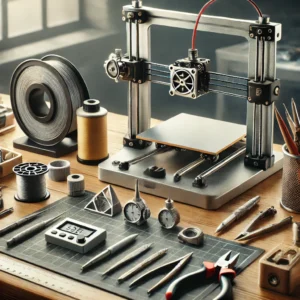3D Printing Revolutionizes Refractory Alloys for Hypersonic Applications

The aerospace industry is undergoing a significant transformation as hypersonic applications push material science to new limits. Among the most critical challenges is the development of refractory alloys—materials capable of withstanding extreme temperatures—needed for hypersonic travel, which exceeds speeds of Mach 5. Traditional manufacturing techniques have struggled to produce these alloys effectively, but 3D printing is proving to be a game-changer.
3D Printing’s Role in Hypersonic Applications
Additive manufacturing, commonly known as 3D printing, is revolutionizing the production of refractory alloys. These materials are essential for withstanding temperatures above 2000°C, making them crucial for hypersonic applications such as missiles, space vehicles, and jets. The ability of 3D printing to produce complex geometries with precision offers significant advantages over traditional methods like casting and forging.
By layering the materials in a controlled environment, 3D printing enhances the performance of refractory alloys, improving their structural integrity and resistance to extreme conditions. This allows engineers to tailor the properties of the material to meet specific needs, such as thermal shock resistance and high-temperature strength, making it ideal for use in hypersonic engines and components.
Benefits of 3D Printing for Refractory Alloys
- Cost Efficiency: 3D printing reduces material waste and lowers production costs, making it an attractive solution for industries requiring expensive materials like refractory alloys.
- Faster Prototyping: Engineers can rapidly produce prototypes for testing, accelerating the development of hypersonic technologies.
- Complex Designs: 3D printing enables the creation of intricate designs that were previously impossible with traditional manufacturing, improving overall performance.
- Material Customization: The additive manufacturing process allows for precise control of the alloy composition, ensuring that materials meet the demanding specifications of hypersonic applications.
Hypersonic Future with 3D Printed Refractory Alloys
As hypersonic technologies continue to evolve, the demand for high-performance materials will only grow. 3D printing is at the forefront of this revolution, offering innovative solutions for producing refractory alloys that are lighter, stronger, and more heat-resistant. The aerospace and defense industries are poised to benefit significantly from these advancements, propelling humanity into a new era of high-speed travel and exploration.



